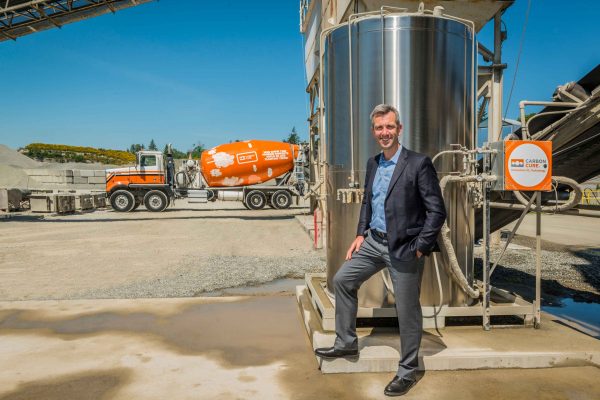Our upcoming event, GLOBExCHANGE (Feb. 27-Mar. 1, 2023) builds on our recently published 10×10 Matrix, which identifies the 10 areas where we need to take action in the next 10 years to get to net zero. In our 10×10 Takes series we’re talking with climate leaders who are working to advance these action areas
Watch this video installment as Elizabeth Shirt, President at GLOBE Series, gets down to business on Leveraging Infrastructure and the Built Environment with Tim Coldwell, President at Chandos Construction.
Read on for the full Q and A and a deep dive into the challenges and leadership opportunities presented by embodied carbon.
ES: What actions can organizations like Chandos take to Leverage Infrastructure & the Built Environment that both drive real climate impact and meet net-zero targets?
TC: The emissions of buildings from operational energy are part of our customers’ footprint, so for a general contractor, it’s about embodied carbon – the carbon we consume in order to produce the materials that go into creating buildings. Chandos’ carbon footprint is the sum of the embodied carbon that we put in these project sites, so the real opportunity for general contractors, because they control the supply chain, is to provide leadership around embodied carbon. We need to show our clients and our customers what is possible in terms of embodied carbon and how we can find low-carbon alternatives at zero premium capital cost. There is a perception that what is right for the environment is a cost premium, and we know from direct experience that this is not always the case.
ES: What critical stakeholders and organizations need to be working together in order to Leverage Infrastructure & the Built Environment to drive climate action?
TC: Most of the embodied carbon in the supply chain for buildings comes from steel, concrete, and aluminium. The producers of these materials need to be first at the table, in that they have an amazing opportunity to differentiate themselves by taking a leadership position on low-carbon alternatives.
Beyond that, as general contractors we sit at the centre of the supply chain, so we need to be experts at understanding where low-carbon materials are available for no premium cost. It is one thing for us to have an idea about a material that might be lower carbon – and it could be the same cost or even lower – but it must work for the owner, and it must be feasible from a design standpoint. So, we need both the project owners and designers at the table.
We need all levels of government at the table, and I would start by implementing mandatory disclosures on embodied carbon in the supply chain. There’s an entire rabbit hole we could go down about what that looks like, how it works, and how to be authentic in those disclosures. Being transparent and really letting the world know how much carbon is embedded in the materials you are selling as a manufacturer, or that you are specifying as a designer, is a good starting point from a policy perspective.
ES: What kinds of actions can be taken within the built environment to get at those tougher-to-tackle supply chain emissions?
TC: Many folks in the industry would point at Environmental Product Declarations (EPDs), as the solution to tackling supply chain emissions, and when I can talk to a supplier and get an actual site-specific EPD for a material, that is a positive first step. However, the dirty little secret around EPDs is that there is no consistent set of rules by which they are developed. Each industry can decide how they are going to develop their EPDs, what counts, and what does not count. A controversial example of that happening is when the forest industry points to mass timber as a lower carbon alternative to steel and concrete. However, when they calculate the carbon footprint of mass timber, they fail to include the carbon that is released from naturally occurring forest fires, including the loss of material from the production process. If you put that back in, it is quite a different conversation. Mass timber is still better than steel, for now, but the gap is not as big as it appears. One of the key actions to take will be getting to truth about what is actually embedded in these materials, and then we will be able to move some real policy decisions forward.
Continue this conversation with Tim Coldwell and Chandos Construction at the GLOBExCHANGE session, Decarbonizing the Construction Supply Chain: The Heavy Lift Ahead of Us. Explore the program to learn more.




